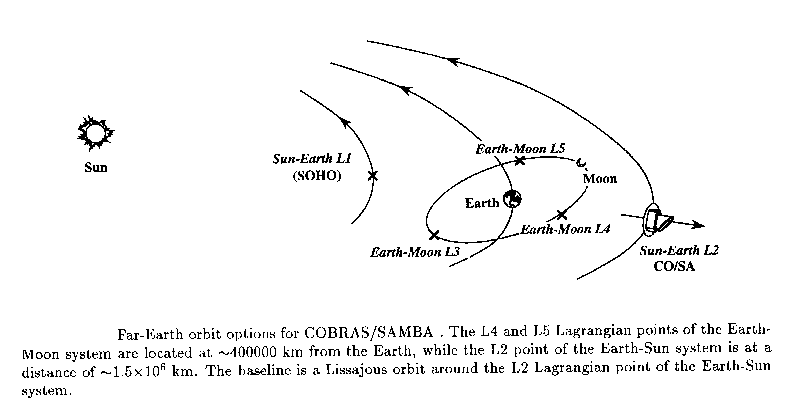Low energy CMB photons are scattered by energetic electrons of the hot intracluster (seen in X-rays) medium. COBRAS/SAMBA should collect data on over 1,000 clusters. The ROSAT satellite is compiling an all-sky X-ray catalog of clusters of galaxies (among other things). Of particular interest now is the question of the temperature profiles of clusters of galaxies, as this impinges on the use of the Sunyaev--Zel'dovich method for determining Ho. The combination of COBRAS/SAMBA and ROSAT data will be particularly powerful in studying the Sunyaev-Zel'dovich effect. Information on the potential Non-cosmological Scientific Results and alternate discussion of the Cosmological Scientific Rationale
COBRAS/SAMBA Mission Description
CMB and Foreground Emissions
The COBRAS/SAMBA mission is designed to map the sky at multiple frequencies to both measure the CMB anisotropies and the various Galactic and extragalactic foreground emissions. Multiple frequencies combined with the known spectral dependence and measurements at very different wavelengths allow the separation of the various components.More on the Separation of the Foregrounds from the Primordial Fluctuations
Solar System Effects
Emission from the Earth, Sun, and other solar system bodies is the next major concern. The effects of solar system emissions is controlled and minimized by using special far from Earth orbits. Examples are Lagrange Point 2 (L2) of the Earth-Sun system and the Lagrange Point 5 (L5) of the Earth-Moon system. The baseline orbit is the Earth-Sun L2 point (see second figure below).
Schematic of one considered orbit
Space craft and Instrument
More on COBRAS/SAMBA payload
for the Phase A Study (Red Book) version.
More on the COBRAS/SAMBA Project
Link to European Space Agency (ESA) Page for COBRAS/SAMBA maintained by Project Scientist Jan Tauber.
Return to the Smoot Group page for a complete description of Dr. Smoot's group's research activities.
Revised 13 August 1996; smoot@cosmos.lbl.gov
 Schematic of Baseline Orbit
Schematic of Baseline Orbit